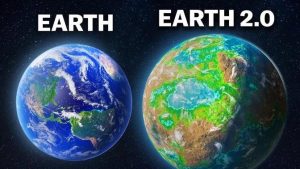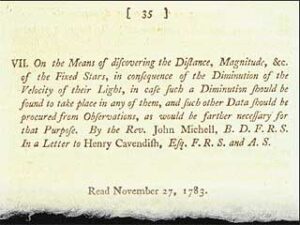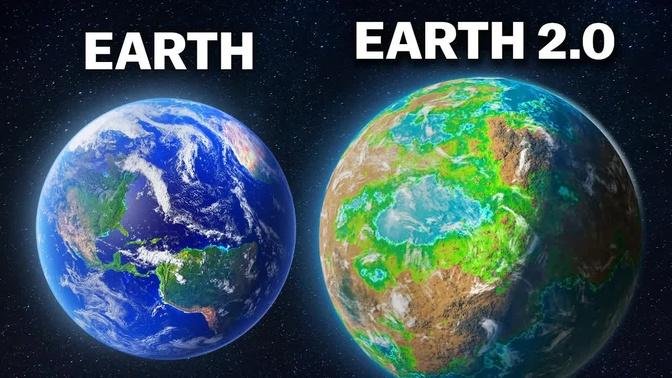Could Earth 2.0 be theoretically a reality in 75 years from now?
April 13, 2023
Could Earth 2.0 be theoretically
a reality in 75 years from now?

In recent years, NASA has made significant strides in the search for habitable planets beyond our solar system. The discovery of a theoretical Earth 2.0, also known as Kepler-438b was discovered in January 2015. While the distance to Kepler-438b, located 640 light years away seemed insurmountable, another theoretical Earth 2.0 , known as TOI700e, only 100 light years away, was discovered in the summer of 2019 by Wolf Cukier, a 17-year-old attending Scarsdale High School in New York at the time, who joined the Goddard Space Flight Center as a summer intern.
I believe, that the wormhole theory could provide a way to travel to TOI 700e by the 22nd century. So we only need a bright young Millennial to crack the wormhole theory………….
The idea of a black hole originated from a letter written by John Michell in 1783, in which he suggested that there might be stars so massive that their gravitational pull would be strong enough to prevent anything, including light, from escaping.

However, it was not until the 20th century that the concept of a black hole began to take shape, thanks to the work of scientists such as Karl Schwarzschild, who developed a mathematical solution to Einstein’s theory of general relativity that described the properties of a black hole.
Over time, observations of the behaviour of massive stars and the detection of X-rays and gamma rays from certain regions of space suggested that black holes were not just theoretical constructs, but real objects in the universe. In the 1960s and 1970s, theoretical work by physicists such as Stephen Hawking and Roger Penrose helped to establish the properties of black holes more firmly, including the idea that they could emit radiation and eventually evaporate completely.
In contrast to black holes, which are objects that trap everything that falls into them, Einstein-Rosen bridges, or wormholes, are hypothetical structures that connect two distant points in space-time, potentially allowing for faster-than-light travel or travel through time. The idea of wormholes was first proposed by Einstein and his colleague Nathan Rosen in 1935 as a solution to the equations of general relativity, but their stability and feasibility have been the subject of much debate and speculation ever since.
With NASA recently announced the discovery of this new, Earth-sized planet in the habitable zone of a nearby star called TOI-700, I’m hoping that researchers around the globe, are writing thesis’s on this.
While both black holes and wormholes are fascinating concepts in physics, the idea of traveling through a wormhole remains firmly in the realm of science fiction. There are many obstacles to constructing or traversing a wormhole, including the immense energy and exotic matter that would be required to stabilize the structure, as well as the possibility of encountering extreme gravitational forces or other hazards during the journey.
In contrast, with black holes originally being theorised by John Mitchell in 1783 and taking 200 years as a concept to comprehend and now widely accepted as a real and important aspect of our universe, with observations and theoretical work continuing to shed light on their properties and behaviour, my belief is that by the 22nd Century, worm hole travel will be upon us, however in 75 years’ time……. I will be over 125 years old and most probably not on this Earth, so until the time that your children and grand-children can travel through space, I can still transport you and your loved ones within Western Australia.
Transport of the future
Jon Ellis
My Getaway Driver

